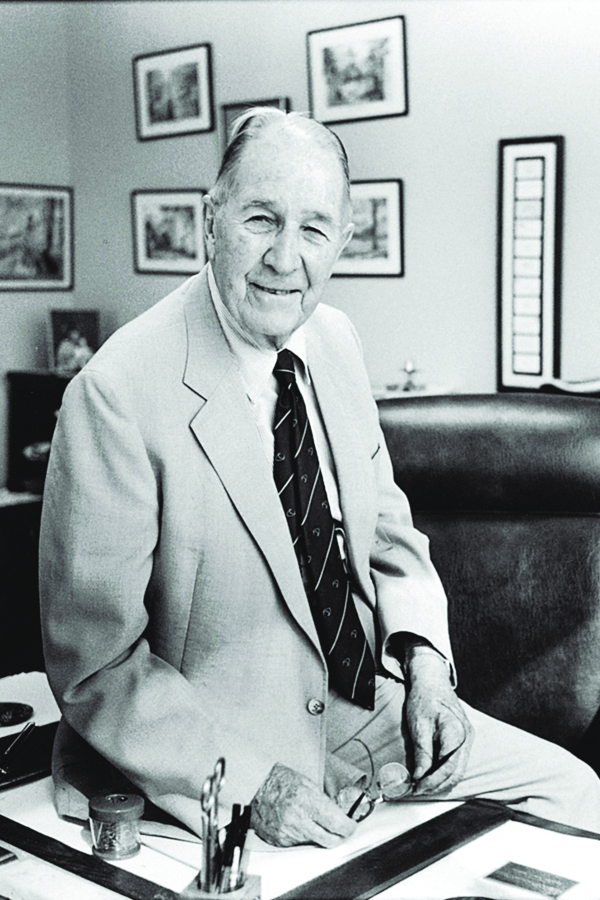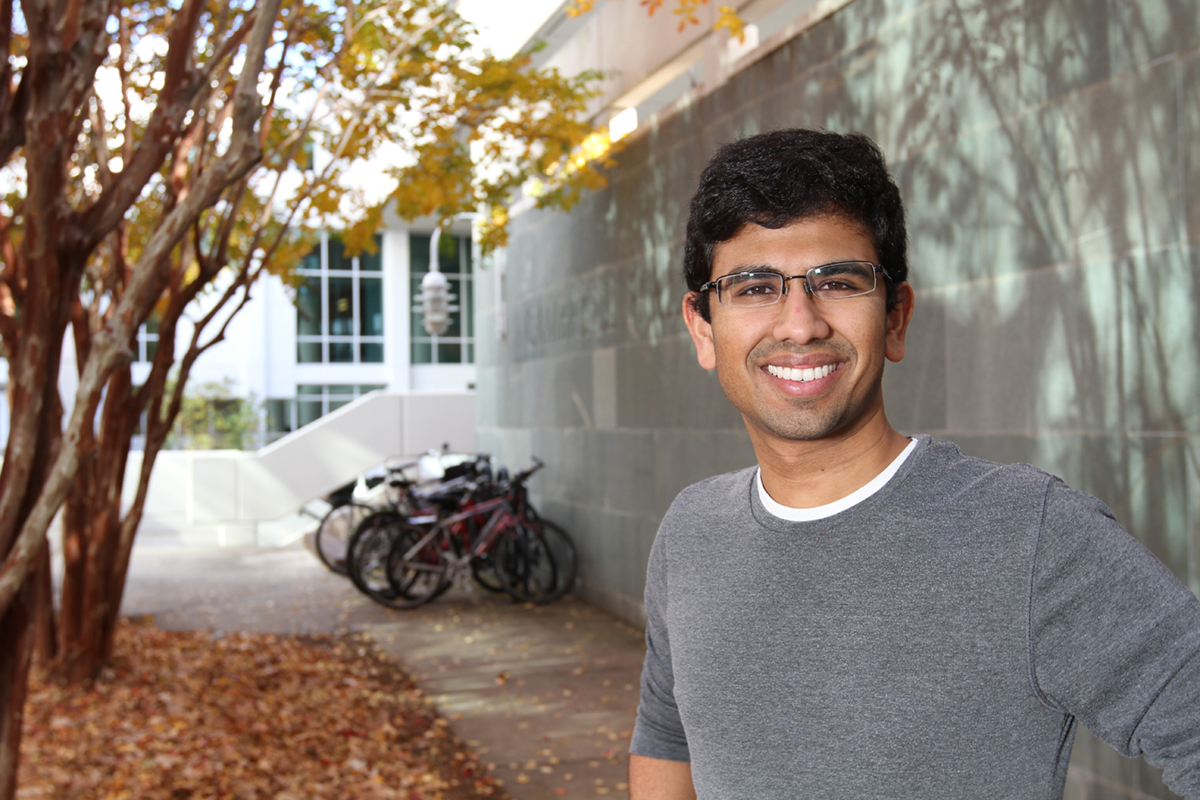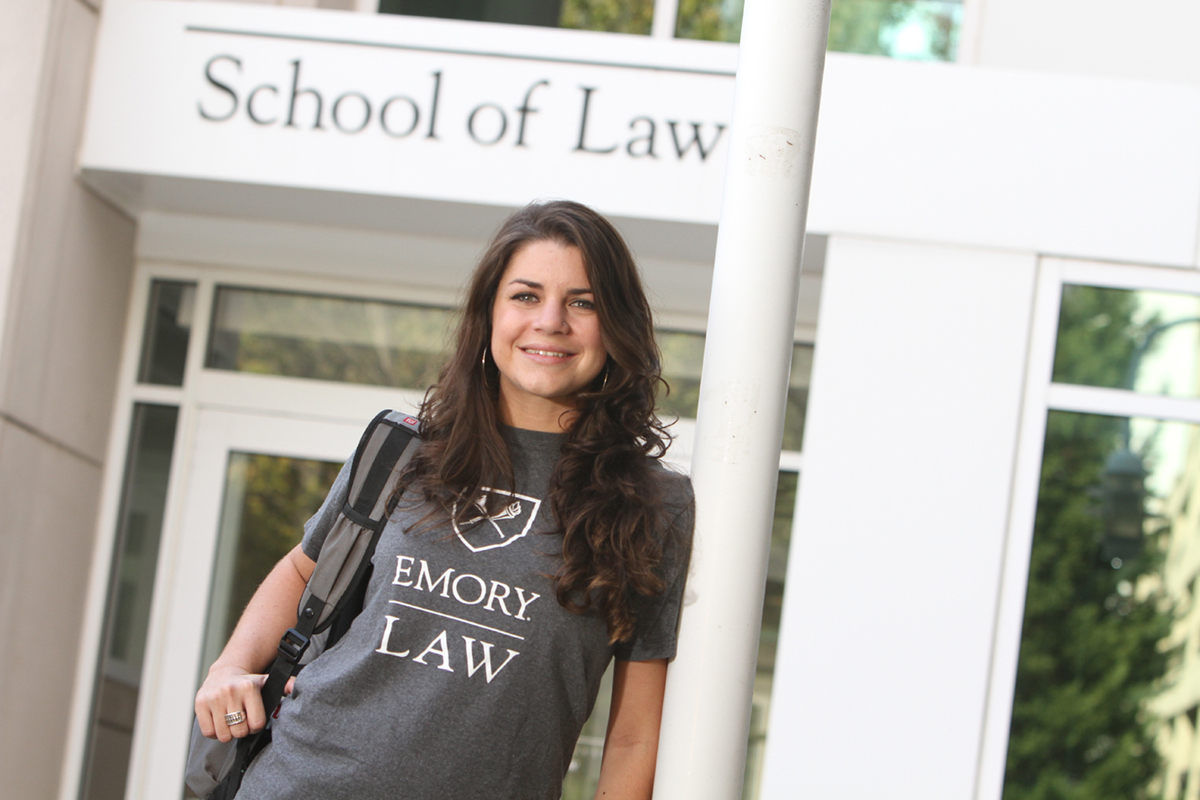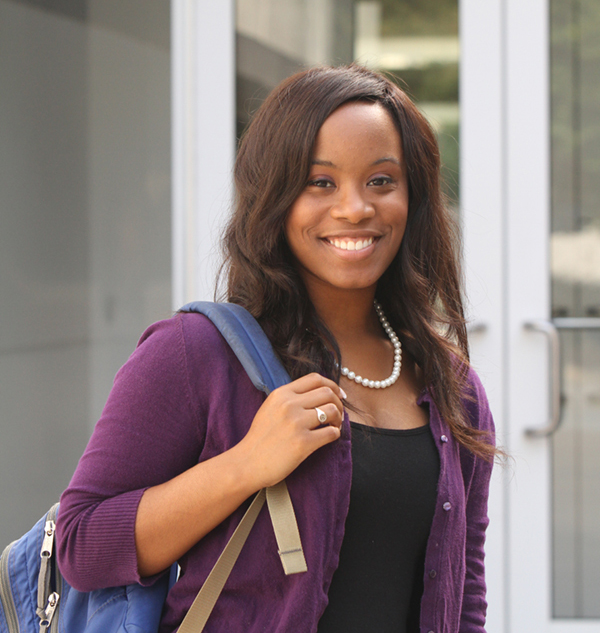Beyond Black and White
At Emory Law, diversity is more than a buzzword


Henry Bowden Sr.
Emory Photo/Video
In 1962, when Emory won the legal right to integrate through a landmark Georgia Supreme Court decision, diversity seemed as simple as black and white.
More than fifty years later, diversity goes far beyond race as universities struggle to attract the best students from all backgrounds.
Ben Johnson Jr. 36C 40L was dean of Emory's School of Law when he and then-Emory general counsel Henry Bowden Sr. 32C 34L argued the case that integrated Georgia's private universities, successfully suing to overturn restrictive provisions of the state's constitution.
The School of Law is proud of the legacy the case carries, and diversity among law classes is a priority for Dean Robert Schapiro. However, he says, the concept of diversity is much broader than in the past.

Ben F. Johnson Jr.
Emory Photo/Video
"Diversity has many dimensions—race, gender, socioeconomic background, international origin, values, beliefs," Schapiro says. "People approach issues from different perspectives according to their histories in general, and that is especially so in law school. Here our students examine important issues of public policy, and discussions are characterized by divergent opinions. Education is better when undertaken in that environment."
Ethan Rosenzweig, assistant dean of admission at Emory Law, said the school is "decades ahead" of other schools in terms of diversity.
"During World War II, Emory was a very small, local law school. After the war, Emory embraced the WWII veterans coming back from the war, and that influx of students is really what made Emory a full-time law school," Rosenzweig says. "We were out ahead of the pack then, and it was the same with integration in the early 1960s. When we are recruiting diverse students, we are not asking them to be pioneers. We are asking them to continue and add to a two-generation legacy."
This year, Emory Law appointed Emily Liu as diversity liaison in the school's Center for Professional Development and Career Strategy. She helps connect Emory Law students with diversity opportunities in the legal sector and is liaison to the school's affinity groups, including the Black Law Students Association (BLSA), the Latin American Law Students Association (LALSA), the Asian American Law Students Association (AALSA), the South Asian Law Students Association (SALSA), and OUTLaw (Emory Law's LGBT organization).
Lydia Russo, assistant dean for professional development and career strategy, says the position of diversity liaison is unique when it comes to law school career offices.
"We created the role of diversity liaison to give Emory Law's diverse students every possible opportunity to position themselves for success with private and public sector employers," Russo says.
Liu has received an overwhelming positive response from the legal community.
"Thanks to Emily's national outreach efforts, the center has connected Emory Law students with countless diversity initiatives sponsored by individual employers, bar associations, and other professional associations," says Russo. In addition to generating job opportunities, Liu has helped facilitate mentorship programs for students. For example, the Leadership Council on Legal Diversity (LCLD) recently launched its 2013–2014 Success in Law School Mentoring Program for first-year students at Emory Law. Liu worked with the LCLD to match twenty diverse first-year law students with local attorney mentors who will guide them during law school and beyond.
"In the past ten years, the recruitment of diverse students has been more important than ever because employers demand it," Rosenzweig says. "Today's sophisticated legal clients, entities, and associations want lawyers who come from and understand diverse backgrounds. It is important that we have a community of students here that reflects the larger client populations that they will represent."
In September, Thad Kodish 00L was installed as president of the Emory Law Alumni Board.
He knows Emory Law's student enrollment statistics—14 percent Asian, 7 percent African American, 7 percent Hispanic, 3 percent multiethnic, and 69 percent white with a nearly even split between male and female—but understands that the diversity the school is trying to achieve exceeds those definitions.
As a managing principal at a large law firm, Kodish says, "I can't place a high enough value on recruiting legal talent with varying backgrounds and perspectives, who have good experience and keen instincts on how to interact with a diverse array of people. When I attended Emory Law in the late nineties, as I know is the case today, students from all walks of life contributed to the classroom discussions. The exposure to those varying perspectives and approaches to legal analysis doesn't just teach you about the law, it gives you invaluable insights on how future judges, clients, adversaries, and codefendants will see things through their own personal prisms."
After graduating from the law school, Rob Henrikson 72L went to work for MetLife as a management trainee in Decatur. During the next thirty-two years he worked his way up through the company, and in 2004 he was named president, chairman, and chief operating officer. Two years later he was made CEO. He served in the role for five years before stepping down as president and CEO in May 2011 and as chairman at the end of that year.
Since 2002, Henrikson and his wife, Mary, have pledged $2.5 million to support diversity scholarships and another $1 million to attract matching gifts to Emory Law's annual fund.
"What I have learned over the years is how much diversity adds value in the business world," Henrikson says. "With diversity, you bring different ideas to the table, different ways of doing things, and it brings a perspective that you may have been blind to before. It is common sense. If you have two talented teams—one where everyone looks and thinks alike and one where everyone is different—who is going to come up with the better solution?"
Although he never practiced law, Henrikson says his Emory law education was extremely valuable to his career. When he became a member of the Emory Board of Trustees, he decided he would establish an endowed diversity scholarship at Emory Law.
"Emory, like all top universities, competes for the best students. Some of these students are discouraged from coming to Emory Law by cost. I felt that if individuals are talented and qualified and help create a diverse class, this scholarship could help them," he says. "The law school is free to use these funds without the definition of diversity being cubbyholed—geography, race, sexual orientation, socioeconomic status—if a student is qualified, he or she can benefit from this. I just want to feel like I am investing in something that is worthwhile and has a return on investment by helping young people become what they have the potential to be."

Kedar Bhatia: "Working with students with different personalities and backgrounds from different places is a lot like what you see when you are working at a large law firm in a large metropolitan area. At Emory Law I had classmates from all over the country and from other countries.
Courtesy of Emory Law
While researching law schools, Kedar Bhatia 13L chose Emory because it offered strengths in the areas that interested him most.
"It came down to really great programs for what I wanted to do, great journals, and a very entrepreneurial environment. It turned out to be exactly right," says Bhatia, who works in commercial litigation with Bracewell and Giuliani in New York.
Of particular interest to Bhatia was appellate litigation. When he discovered Emory did not have an appellate clinic, he worked on creating the Emory Law School Supreme Court Advocacy Project in his first year with the help of the late Professor David Bederman. Bederman, who served as the organization's first adviser, was counsel of record in fifty-two cases in the United States Courts of Appeals, and he argued four cases before the US Supreme Court.
"The spirit of the school in trusting people with a plan to do what they wanted to do, under supervision, was a great experience. They made sure it was done right, and the administration was very helpful, but I feel like another school would have imposed a lot of barriers. I am grateful for that because I am not sure it could have happened elsewhere," Bhatia says, adding that the depth and breadth of experience and backgrounds—within the faculty and among his classmates—was valuable to his legal education.
"When I really got to know other students and work with them on a close basis, I realized how diverse the backgrounds were. I started law school at twenty-one, but we had many students who'd already had interesting careers before law school. It provided a lot of perspectives and exposed me to a lot of different leadership styles," says Bhatia, a scholarship recipient who served as president of the South Asian Law Students Association and as editor-in-chief of the student-run Emory International Law Review.
"Working with students with different personalities and backgrounds from different places is a lot like what you see when you are working at a large law firm in a large metropolitan area. At Emory Law I had classmates from all over the country and from other countries. It was a microcosm of the world," he says.

Maria Piva: "It is an increasingly borderless world, and I think that it is crucial to pursue any graduate degree in a diverse environment."
Courtesy of Emory Law
Originally from Buenos Aires, Argentina, Maria Piva 14L moved to a diverse but heavily Hispanic community in Miami when she was four. She came to Emory with aspirations to return to her community after graduation to help new Americans navigate the legal system.
"It is very important to expose students to people from different backgrounds and cultures before they go out into the profession," she says. "It is an increasingly borderless world, and I think that it is crucial to pursue any graduate degree in a diverse environment."
Piva likened diversity in education to the importance of studying a culture before traveling and working abroad.
"You have to educate yourself and study the culture so that you will be able to conduct yourself properly in all situations. Those things are an inherent part of being in a diverse culture," she says. "For legitimate reasons, it is considered that the minority diversifies the class, but every person brings in his or her own perspective. In an environment like law school, which is about the exchange of ideas, that is really important."
Piva works with the law school's Office of Admission to help attract potential students to Emory Law.
"There are many incentives that law schools offer—from waiving application fees to offering financial aid packages—that are essential in attracting the best students, especially considering how expensive law school can get. If a school does not offer these, it can get stuck behind and risk having the community suffer from not having a broad and diverse class," Piva says.
David Kessler 94L was an accountant looking to get into tax law when he enrolled at Emory. "When I got to Emory, I got into some of the more litigation-centric and securities classes and I found that much more exciting," says Kessler, now a partner in Kessler Topaz Meltzer & Check, a Pennsylvania firm that is one of the largest in the country specializing in prosecuting securities fraud claims and consumer and investor protection litigation through class action.
"Emory was more of a practical experience than just textbooks and case law. By the time I graduated, I had a better grasp of what it meant to be a lawyer, what it meant to be accountable to people, and what it meant to practice as an attorney," he says. "Emory guided me to be conscious of rights and wrongs and things going on in the world that impact a broad group of people. It has stayed with me that the law is so much more than textbooks and case law. That guiding principle is what made us want to give back to the institution that gave me such a well-rounded education."
Kessler and his wife, Rhonda, have pledged $150,000 to the law school for diversity scholarships.
"It is hard enough for students to get into a great institution like Emory. It is essential for them to have opportunities to continue their education and become part of the most important conversations happening in society," Kessler says. "To me, the conversation is incomplete without a diverse group of people answering the questions we face as a society. It can't all come from the same voice."

Kioceaia Stenson: "At Emory I have had opportunities to meet people who may not look like me, who think differently, and who come from different socioeconomic and religious backgrounds."
Courtesy of Emory Law
When she graduated from Spelman College in 2011, Kioceaia Stenson 14L was accepted to ten law schools around the country. She chose Emory for its sense of community and the quality education available from a nationally recognized university. In her third year at Emory Law, Stenson is president of BLSA, a member of the Emory Law Mock Trial Society and the Emory Public Interest Committee, and a participant in the Criminal Law and Civil Litigation practice societies.
She says diversity has been a natural facet of her Emory experience.
"I came into law school not wanting just to do well academically but also to make significant friendships and connections while I was here," she says. "At Emory I have had opportunities to meet people who may not look like me, who think differently, and who come from different socioeconomic and religious backgrounds. We have a multitude of organizations that reflect that diversity, but everyone works together."
Let the Record Show: Diversity Matters
In 2002, a team of professors from the University of North Carolina at Chapel Hill; the University of California, Los Angeles; and the University of North Carolina at Greensboro began a ten-year study of the influence of race on the quality of a legal education.
The unpublished report of those findings, Does Race Matter in Educational Diversity? A Legal and Empirical Analysis, says yes—it matters.
"The short answer is that extensive quantitative and qualitative empirical data support the finding that a racially diverse law student body provides educational benefits for students, for their institution, and for society, especially if there is significant interaction among students from diverse backgrounds," reads the report. "We find that students differ in multiple ways upon enrollment in law school. Many of these differences are associated with diversities of backgrounds, experiences, perspectives, expectations, and outlooks that are related to their race. Many of the observed racial differences among students contribute to learning because differences foster richer interactions and positive educational outcomes that benefit students, institutions, and society. We find that race contributes to the achievement of educational diversity. In addition, under conditions of significant law school racial diversity and high intergroup contact during law school, graduating law students perceived their law school as more open and respectful of diverse ideas."
Diversity Decisions
During the lifetimes of current Emory law students, the US Supreme Court has decided several cases with implications for diversity in higher education.
In 1992, in United States v. Fordice, the Supreme Court ordered nineteen states to take immediate action to desegregate their public higher education systems. Then, in 2003's Gratz v. Bollinger, the Supreme Court outlawed the race-sensitive admission policy at the University of Michigan, which used a numerical formula that gave extra points to black applicants.
But in the companion case, Grutter v. Bollinger, the court upheld an affirmative action program at the University of Michigan Law School, confirming the 1978 ruling in Regents of the University of California v. Bakke that race could still be considered in admission decisions as long as all other factors were equal.
In October 2012, the Supreme Court heard arguments in Fisher v. University of Texas at Austin, a lawsuit filed in 2008 against the university by a white applicant who alleged that the university's consideration of race in admission violated the Equal Protection Clause. Last June, the court decided that the university did not prove that the means it chose to attain diversity in its enrollment were narrowly tailored to its goal.



